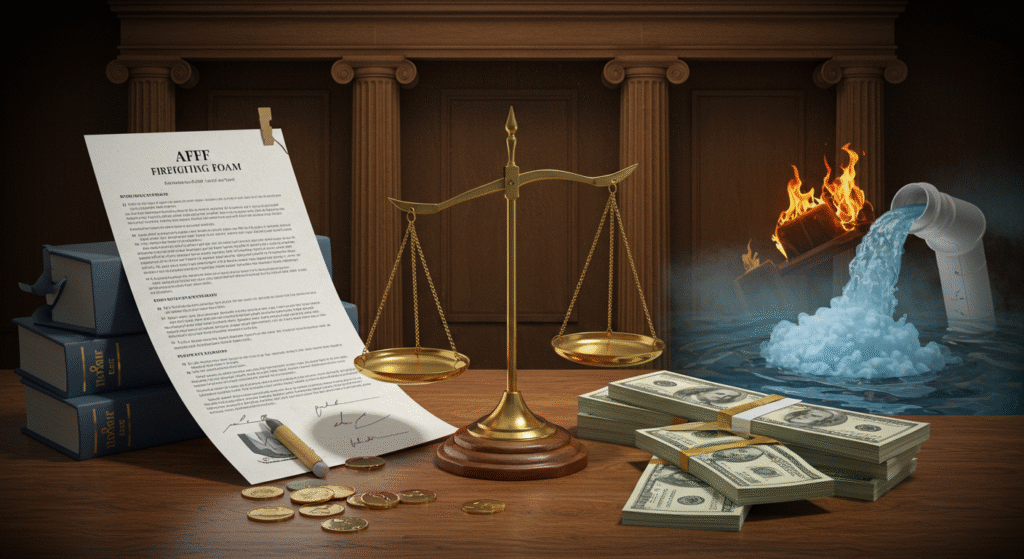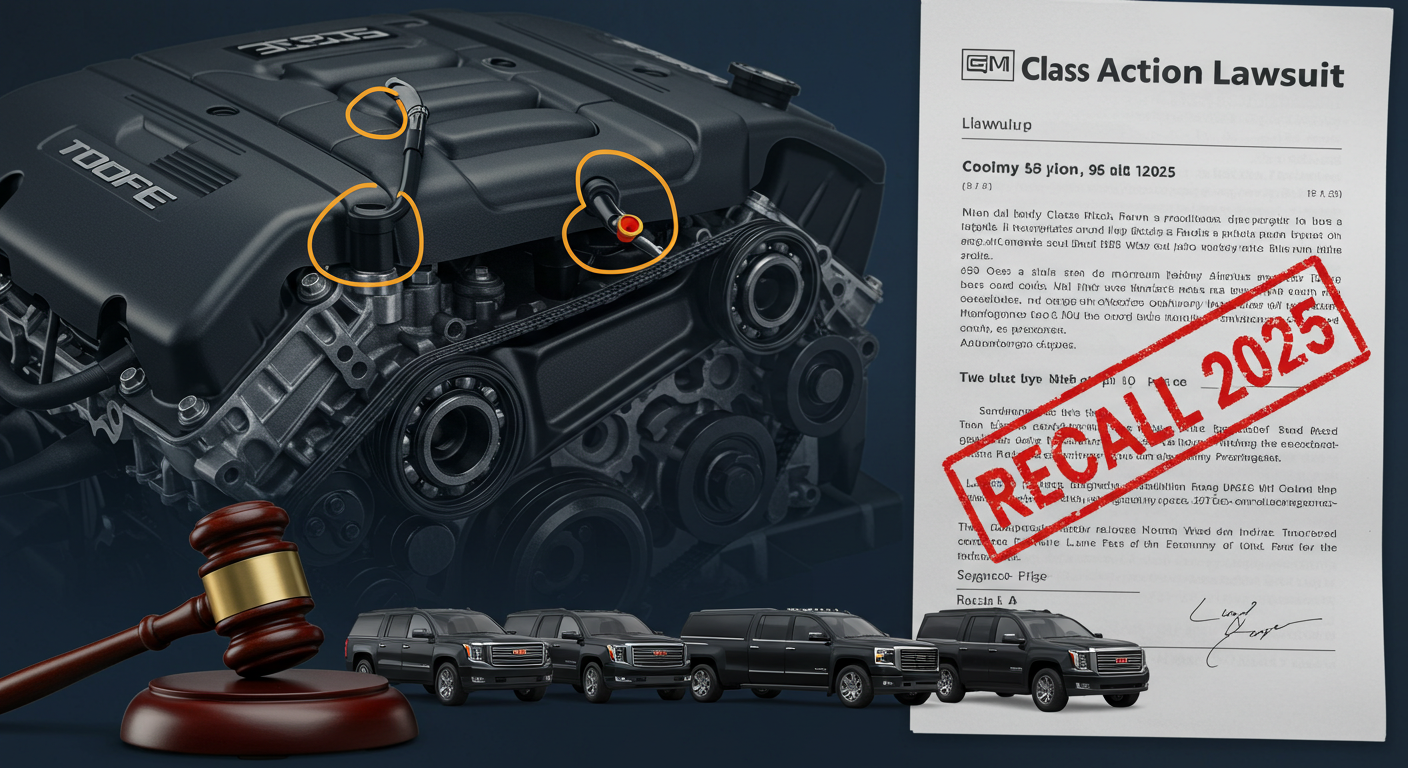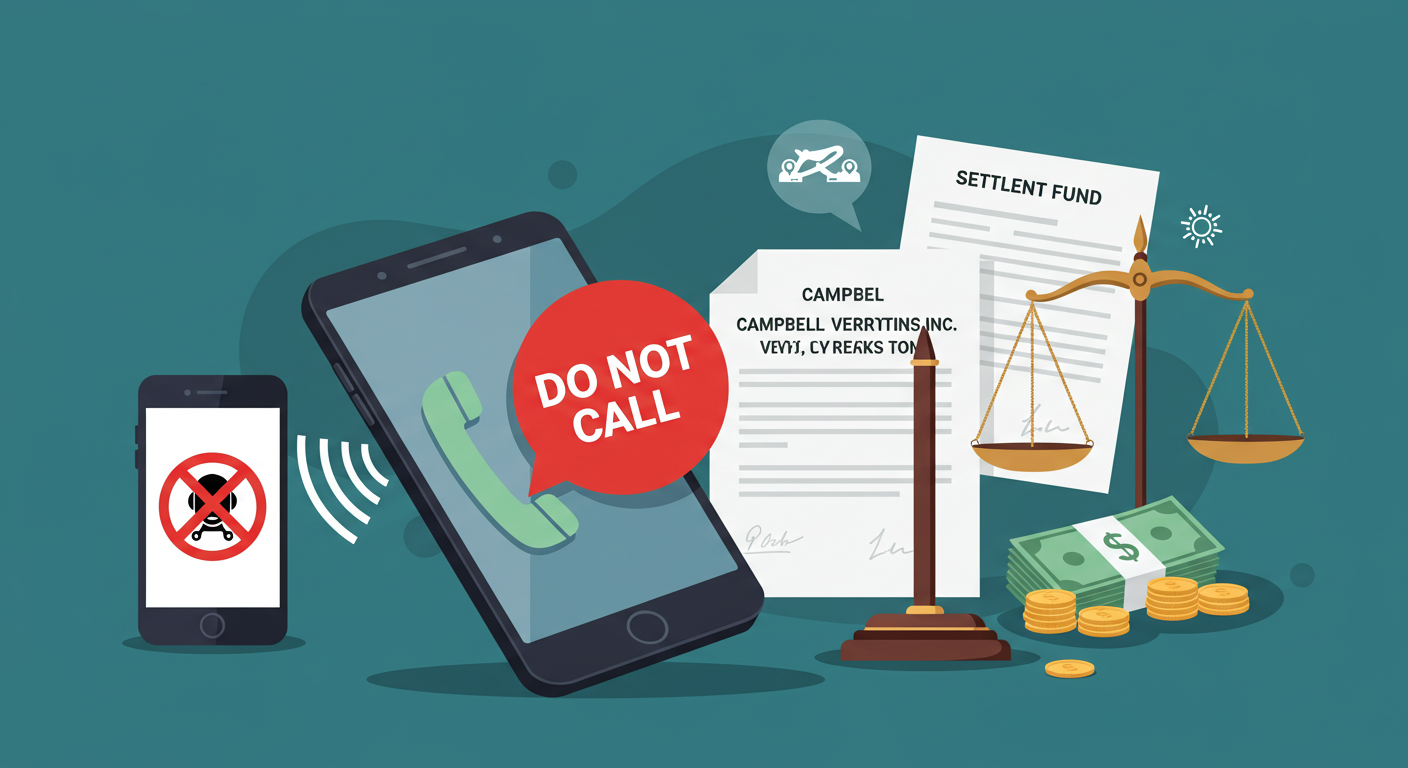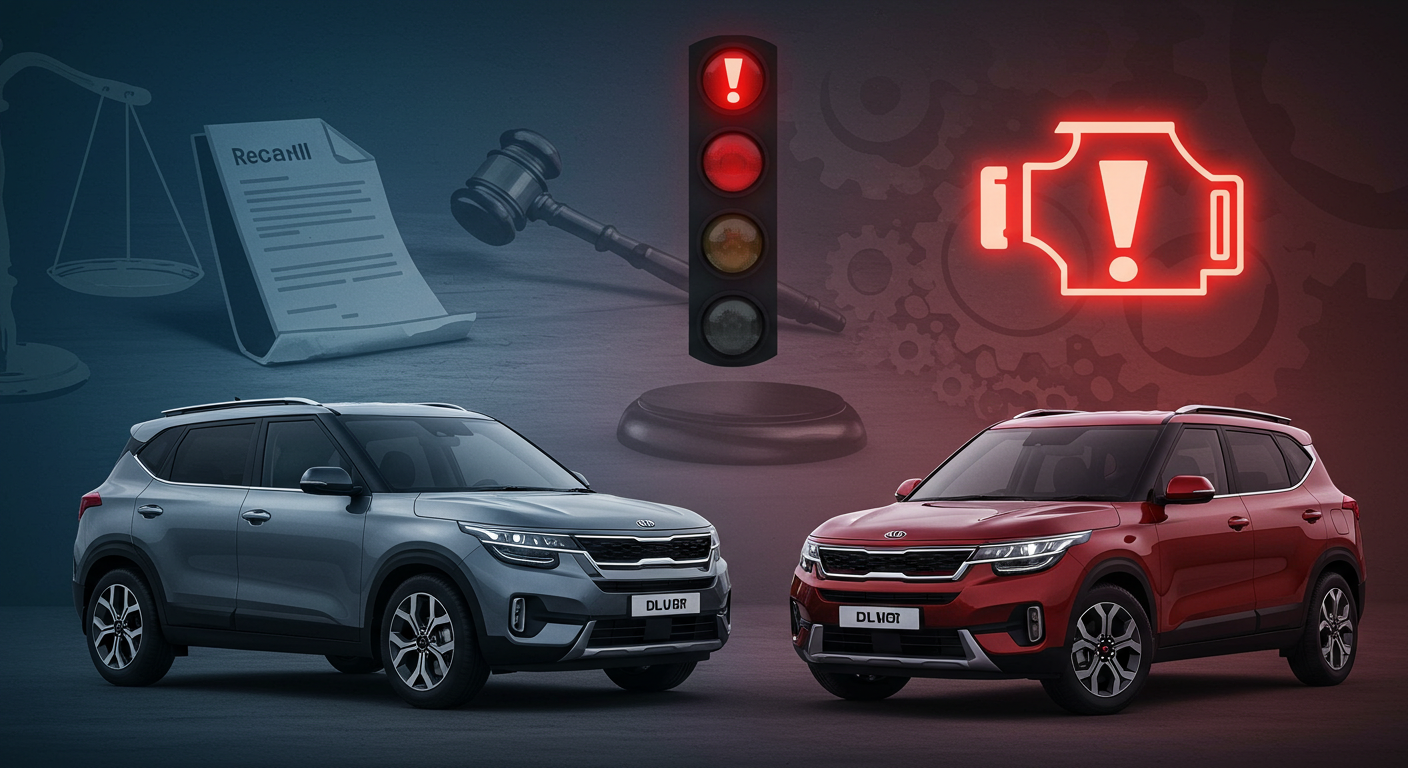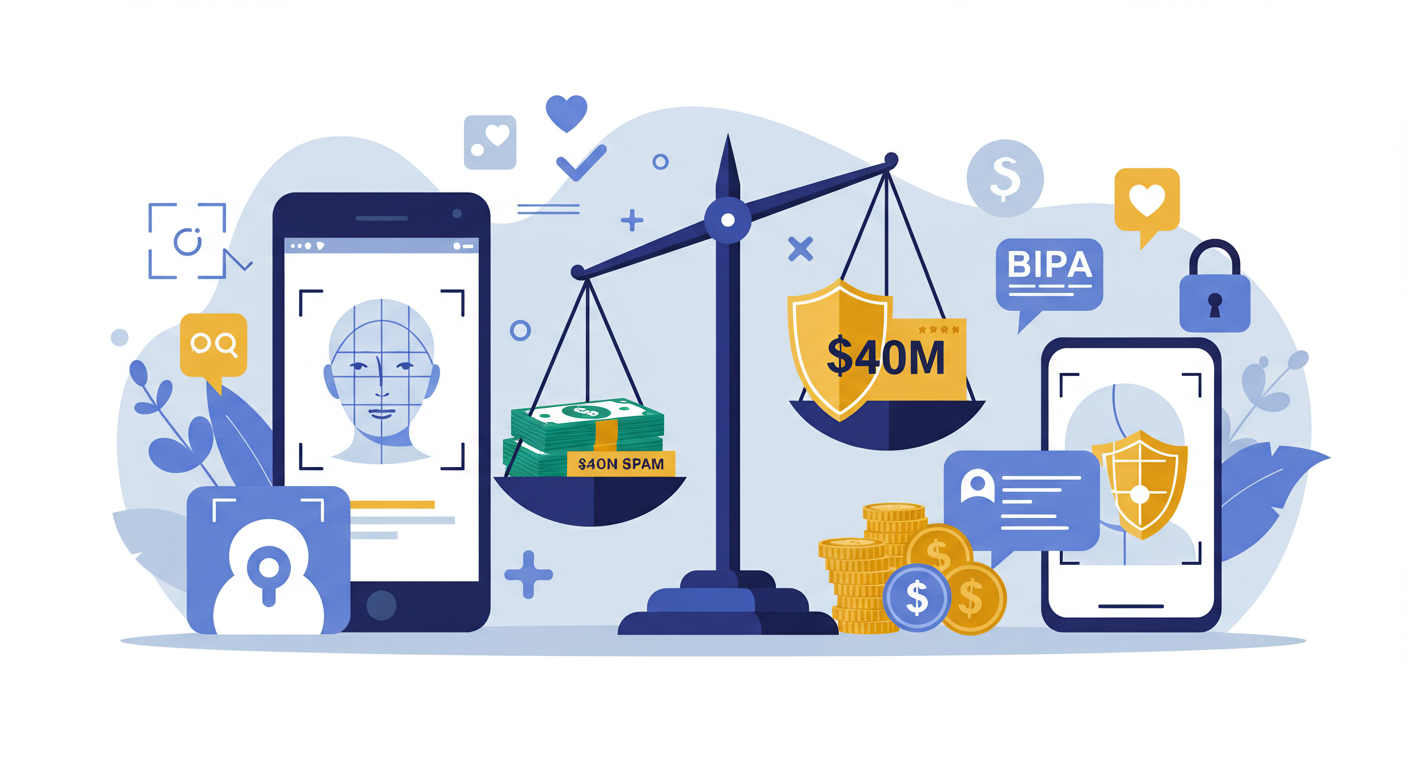Hi, I’m Orland Howell. I’ve spent four years writing about lawsuit settlements, making hard legal topics easy for everyone. I’ve worked with law firms and clients to explain cases clearly. In this 2025 update, I’ll explain AFFF Lawsuit Settlement amounts in very simple wordings. We’ll cover what people got, how payout tiers work, and the big company settlements. All facts come from trusted court records and updates as of October 2025. No guesses—just clear, true information to help you.
What Is AFFF and Why Are There Lawsuits?
AFFF is a firefighting foam called Aqueous Film-Forming Foam. It’s been used since the 1960s to put out fuel fires at places like airports and military bases. The foam works well because it has chemicals called PFAS, nicknamed “forever chemicals” because they stay in the body and environment for years.
The problem? PFAS can make people sick. Studies show they cause cancers like kidney or testicular cancer, plus other issues like thyroid problems or stomach diseases. Firefighters, soldiers, and people near polluted water got exposed without knowing it was dangerous. Companies like 3M, DuPont, and Chemours made the foam but didn’t warn people about the risks.
This caused lawsuits. People said these companies hid the dangers and should pay for health problems and water cleanup. By 2025, over 12,000 cases joined a big court group in South Carolina called Multidistrict Litigation (MDL 2873). This group handles all cases together to make things fair and fast.
As of October 2025, no final deal exists for personal health claims. But water cleanup deals are done, and experts think personal payouts are coming soon. Let’s look at the money details.
Big AFFF Settlements in 2025
First, let’s talk about the huge deals companies made. These mostly pay for cleaning polluted water, but they show companies are paying billions. This makes it likely they’ll pay for personal claims too.
In June 2023, 3M agreed to pay $10.3 billion over 13 years to clean public water systems harmed by PFAS from AFFF. This was the biggest deal. It helps towns clean water but doesn’t pay for people’s health costs.
In early 2024, DuPont, Chemours, and Corteva paid $1.185 billion for water pollution. BASF paid $316 million in May 2024 for water claims too.
Carrier Global paid $730 million in 2024 to settle claims against its unit, Kidde-Fenwal, which made AFFF and went bankrupt because of lawsuits.
In May 2025, 3M paid up to $450 million for water pollution in New Jersey from PFAS, including foam. In July 2025, a $92 million deal in Hoosick Falls, New York, included $27 million from DuPont for water damage.
These deals add up to over $13 billion. They show companies know they did wrong and are paying. For health claims, like cancer from foam, payouts are next. Test trials for kidney cancer claims start in late 2025, which could speed things up. Experts think a big deal for people’s claims will come by early 2026, with money soon based on past cases and current legal updates, not guaranteed.
How Tiers Decide Payout Amounts
AFFF lawsuits use a “tier” system to split money fairly. Tiers group cases by how bad the health problem is, how much foam exposure someone had, and proof it’s linked to PFAS. It’s like levels—the higher the tier, the more money.
Tiers make sure everyone gets a fair share. A firefighter with 20 years of foam use and cancer gets more than someone with short exposure and a smaller health issue.
Based on 2025 updates, here’s how tiers work. These are estimates from law firms and past PFAS cases. Final amounts depend on the deal.
Tier 1: Very Serious Cases
This tier is for people with the worst health problems from long AFFF use, like firefighters or soldiers who used foam every day.
- Who qualifies? People with serious cancers like kidney or pancreatic cancer, with strong proof of heavy exposure, like work videos or blood tests showing lots of PFAS.
- Payout range: $200,000 to $500,000 per person. Some top cases could get $600,000 or more if someone died.
- Why so much? Science strongly links PFAS to kidney and testicular cancers. Lost wages and pain add to the amount.
In past cases, like DuPont’s PFOA lawsuits, top tiers got nearly $1 million for bad harm. Expect similar amounts here.
Tier 2: Serious but Less Severe Cases
This tier is for cases with clear harm but not the worst conditions.
- Who qualifies? People with cancers like testicular, prostate, or thyroid, with medium exposure (5–20 years). Other issues, like stomach diseases, with good proof also fit.
- Payout range: $150,000 to $300,000, often around $250,000.
- Why this amount? Proof is strong, but the harm may not end life quickly. Younger people get more for lost future work.
Lawyers say this tier will include many firefighters.
Tier 3: Lower Exposure or Milder Issues
This tier is for cases with less exposure or smaller health problems.
- Who qualifies? People with short exposure (under 5 years), milder cancers, or issues like high cholesterol from PFAS. Proof might come from water tests, not foam use.
- Payout range: $20,000 to $75,000, sometimes less.
- Why less? Weaker proof or less harm means smaller shares. Even small payouts help with medical bills.
Across all tiers, experts guess the average payout will be $250,000 to $450,000 once settled. These are estimates, not promises, until the deal is final.
What People Got So Far
By October 2025, most money went to water cleanup, not people. But some early health payouts give clues.
In 2020, DuPont paid $50 million to one person with testicular cancer from PFAS in water tied to AFFF. This is a Tier 1 example—big because it was a strong case.
In Wisconsin, a 2024 group lawsuit against Tyco, Chemguard, and ChemDesign settled for $17.5 million. Of that, $2.5 million went to people with cancers like testicular or kidney from PFAS. Each got $10,000 to $50,000, based on proof, fitting Tier 3. This was the first U.S. deal for health harms from PFAS.
In 2018, 3M paid Minnesota $850 million for water and health claims. People got $20,000 to $100,000 after fees.
For water claims, payouts vary. In 3M’s $10.3 billion deal, towns get millions based on pollution levels. People might get $1,000 to $5,000 for water filters. It’s small but helps with basics.
These examples show tiers working. Strong cases get more. With over 12,000 lawsuits in the MDL, bigger personal payouts are coming soon.
What Affects Your Payout Amount
Tiers aren’t random. Courts and lawyers look at key things. Here’s a simple list:
- Health Problem: Kidney or testicular cancer often means Tier 1. Thyroid issues might be Tier 2 or 3. Science matters—kidney cancer has the strongest PFAS link.
- Exposure Amount: Using foam daily for years ranks high. Blood tests showing PFAS help prove it.
- Age and Lost Work: Younger people lose more work years, so they get more. Older people focus on medical costs.
- Proof Strength: Doctor’s notes, work records, and experts make a strong case. Weak proof lowers your tier.
- Your State: States with strict PFAS laws, like California, may increase payouts.
In 2025, judges made a “points” system for tiers, like a scorecard. More exposure means more points, keeping things fair.
What’s Next for AFFF Claimants in 2025?
This year brought big steps. The MDL had 10,391 cases by June and over 12,000 by September. In August, Judge Gergel paused trials to handle new cases. He set a September 5 deadline for key cancer claims—missing it could keep you out of settlements.
A June 2025 study showed firefighters have much more PFAS in their blood than others, helping all cases. The military found PFAS at over 700 bases, proving many were exposed.
As an expert, I think a big settlement will come by mid-2026. Companies risk huge jury awards for hiding dangers. Past cases, like asbestos, settled big after test trials. With $13 billion already paid for water, personal deals could add $20–30 billion.
Hurry up. Some states have deadlines called statutes of limitations. File now to join.
How to File an AFFF Claim
Filing a claim is easier than it sounds. Here’s how:
- Check if You Qualify: Were you exposed to AFFF? Do you have cancer or thyroid problems? Family members near bases might qualify too.
- Get Proof: Collect doctor’s notes, work records, or blood tests. No proof? Lawyers can help find it.
- Find a Lawyer: Pick a firm with MDL 2873 experience and PFAS wins. Many offer free talks and only get paid if you win.
- Join the MDL: File in South Carolina court. Deadlines, like September’s, matter.
- Wait for Money: After filing, you get a tier. Payouts may take 6–18 months after court approval.
Lawyers usually cover costs. If you win, they take 25–40% of your money.
Common Questions About AFFF Payouts
When will I get paid?
Water deals pay now. Health payouts should come in late 2025 or 2026 after trials or a deal.
Do I need to go to court?
No. Most cases (95%) settle without court. Trials are just tests.
Can veterans file?
Yes. Many bases used AFFF. The VA can help with proof.
Is there a limit on claims?
No set limit, but file soon to get your share.
Final Thoughts: Justice for AFFF Victims
AFFF lawsuits show a helpful tool caused big harm. From $10 billion water deals to expected $200,000+ personal payouts, 2025 brings hope. Tiers make it fair—Tier 1 could pay $500,000 for bad cases, while Tier 3 pays $20,000 for smaller ones. Real people got $50 million in single cases and $2.5 million in group deals.
With my experience in settlements, I believe companies will pay because the proof is strong. If you or someone you love was hurt, don’t wait. Talk to a lawyer now. Knowing your options brings you closer to justice.
Disclaimer: This article is for informational purposes only and does not constitute legal advice. Laws and regulations regarding AFFF lawsuits may change, so you should consult a qualified attorney for guidance specific to your case. No guarantees or promises are made about the outcomes of any claims or settlements. Always verify information with legal professionals before taking action.
Explore More:
OneMain Financial FCCPA Settlement — Who Got Paid, How Much, and What Happened After Deadline
Telescope Settlement Paid $32M: How Eligible Buyers Claimed Compensation (Jan 2005–Sep 2023)

Orland Howell is a seasoned content writer with four years of deep expertise in crafting compelling and informative content about lawsuit settlements. With a keen understanding of legal nuances and a talent for translating complex topics into clear, engaging narratives, Orland helps law firms, legal professionals, and clients communicate effectively. His work spans blog posts, articles, whitepapers, and website content, all designed to educate, inform, and drive results. Passionate about empowering audiences with knowledge, Orland combines precision, creativity, and industry insight to deliver content that resonates and builds trust.
